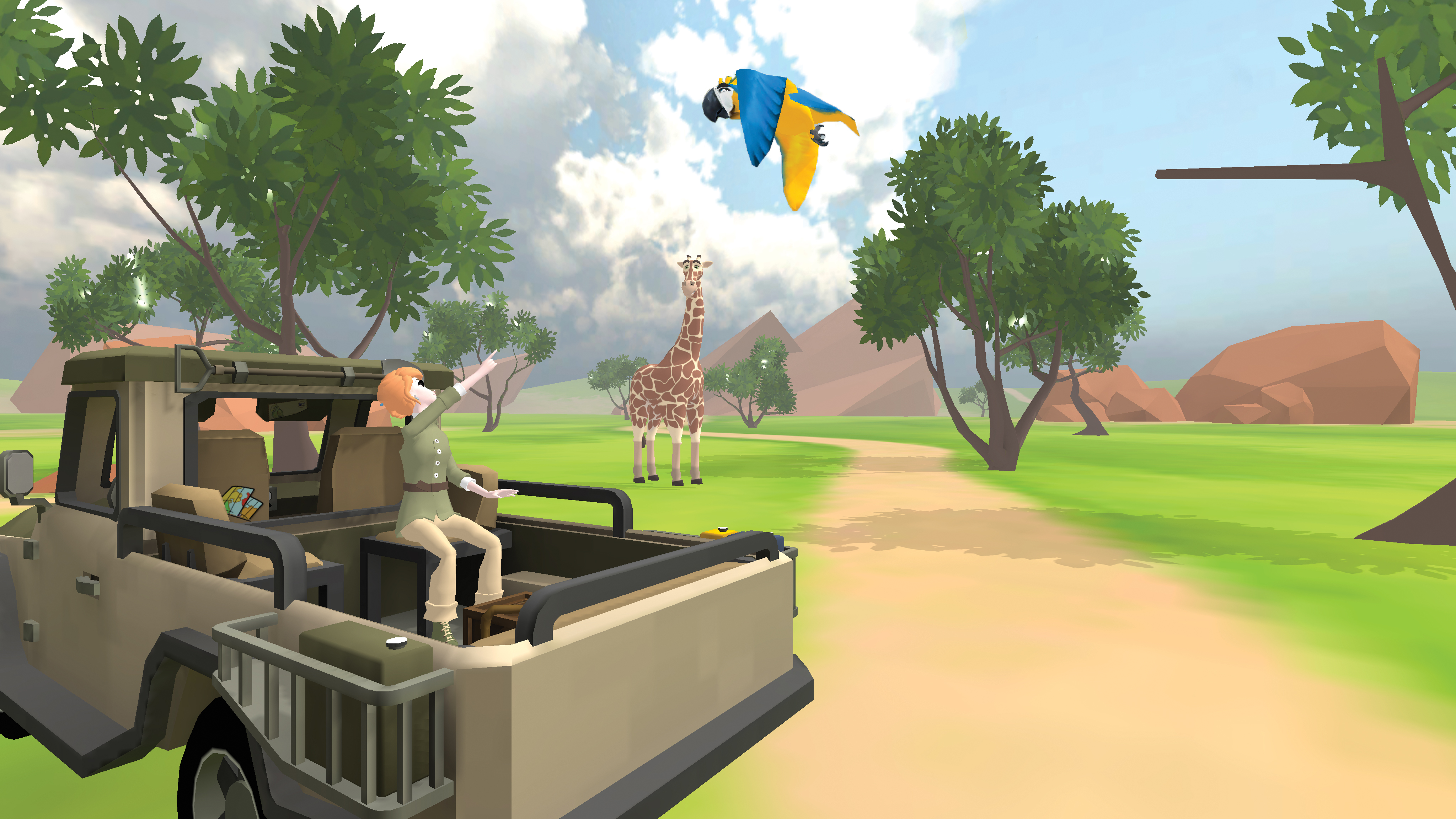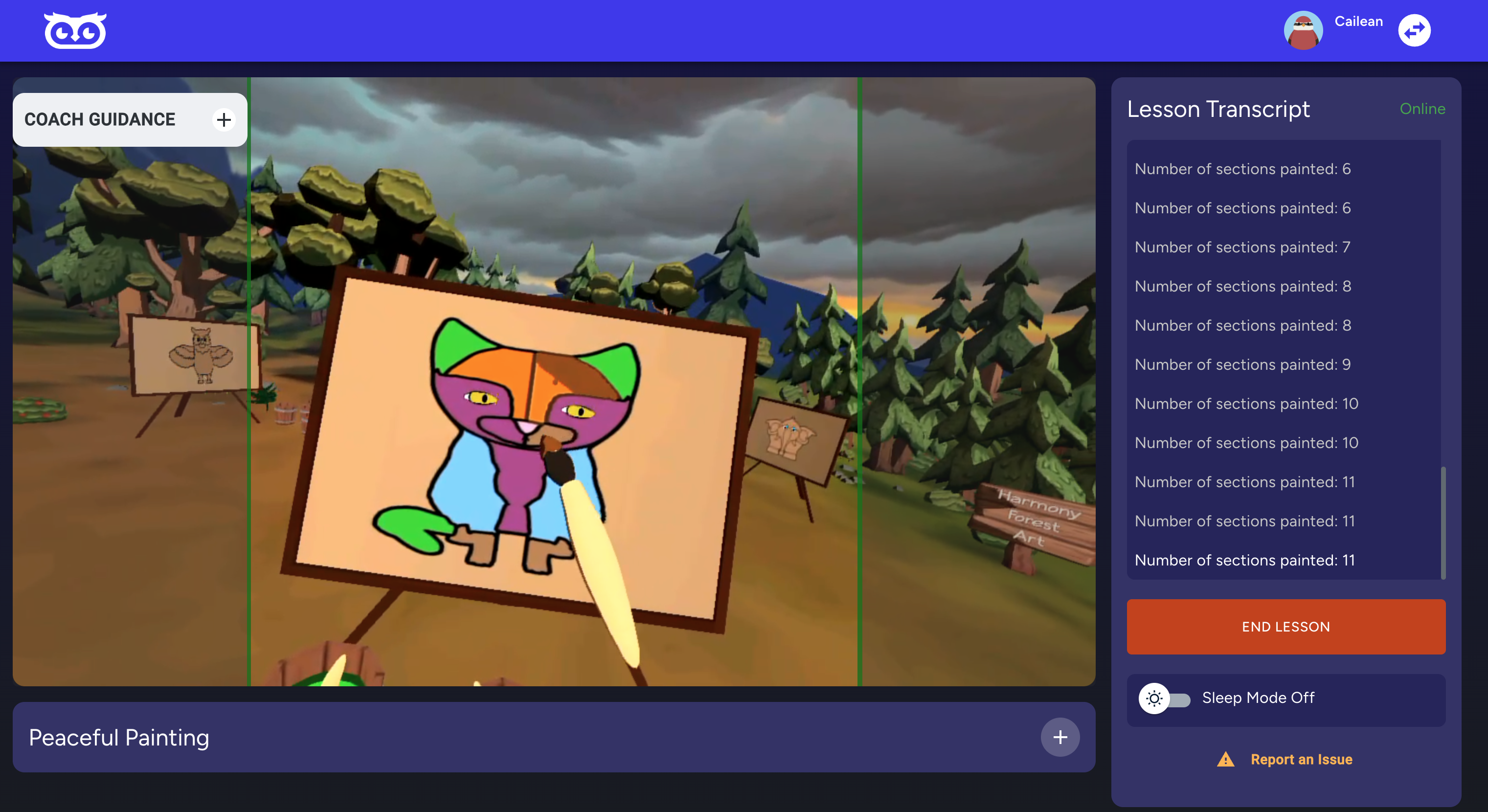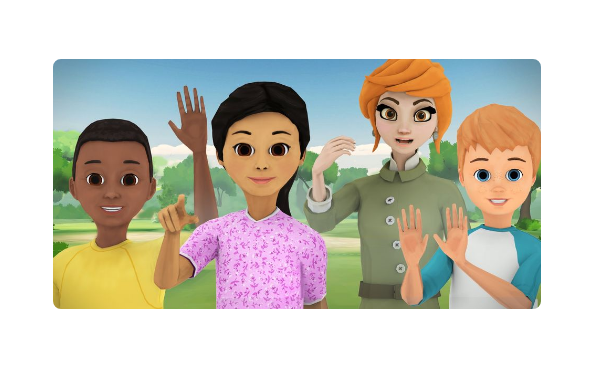Developing communicative interactions with new acquaintances is often a more complicated process for individuals with limited speech than it is for communicators who use intelligible speech. The use of commonly understood gestures can be an efficient bridge in these instances. Early on, Floreo developed a series of four lessons to address some early gestural communication within the meaningful context of a simple play narrative. As we look deeper into these four lessons, we see that they not only address gestural communication but can also address play skills, group skills, the ability to have agency over your environment, and some simple problem-solving.
The “story” is as follows: The Learner arrives at a play area as part of a group. The “teacher” after greeting the group, chooses kids to go over to the swing area, one at a time. When over at the swing area, the Learner has the opportunity to choose different children to take a turn at play. In this case, the avatar children will play by pushing an elephant on a swing. Next (with the elephant taking a nap), it is time to invite the giraffes over. Finally, now that the elephant is awake again, the children have returned, and the giraffes are present and watching, the Learner negotiates the situation to return to play so that everyone can enjoy it.
To apply this story to the Floreo lessons, we begin with: Start the Gestures Game. In this lesson, the Learner waves to greet Emma. Then, the Learner raises a hand and waits to be called on. The acquisition of these gestures, which many children who use speech will acquire through observation and imitation, often need explicit teaching to those who don’t rely on speech to communicate.
Next, we move to Whose Turn is it to Push the Swing? where the Learner points to make a choice (that is, points to choose a child who will push the swing.) Gestural pointing, either to make a choice or draw someone’s attention to an object of interest, typically develops as an extension of joint attention. In many of the Learners we are trying to support, these skills are delayed. The push gesture introduces the beginning of a turn at play. While using this lesson, a Coach may consider using a phrase such as “Ready, Set, Go,” or “1, 2, 3, Go,” to reinforce the notion of starting a play turn.
We then proceed to the lesson: Stop & Go with the Giraffes, where the Learner has opportunities to use the gestures to come closer and stop in a simple, fun, and meaningful scenario. These are two very powerful expressions for early communicators. The come closer gesture allows individuals to get someone’s attention and/or to express that they need help with something. The stop gesture quickly shows someone else that there is something that may be uncomfortable or out of place for an individual. The lack of ability to efficiently communicate these messages can lead to frustration and anguish. Very importantly, these gestures can give an individual agency over their situation which every being appreciates.
We close out this first story with Move Giraffe! It's Time to Swing. We start this scene with some simple problem-solving. We can’t start swinging until the baby giraffe moves out of the way. (There just isn’t space and someone could get hurt.) So, the Learner asks the giraffe to move (another gesture which, if generalized, can allow an individual agency over their situation). We then return for a reprise of the push gesture.
Using commonly understood gestures (i.e., iconic gestures) can be an important avenue to communicate efficiently with new acquaintances. Moreover, is a highly efficient way to communicate with familiar people. These Floreo lessons introduce gestural communication that can and should be generalized to the Learner’s natural environment.






-1.png?width=550&height=250&name=Untitled%20(3)-1.png)